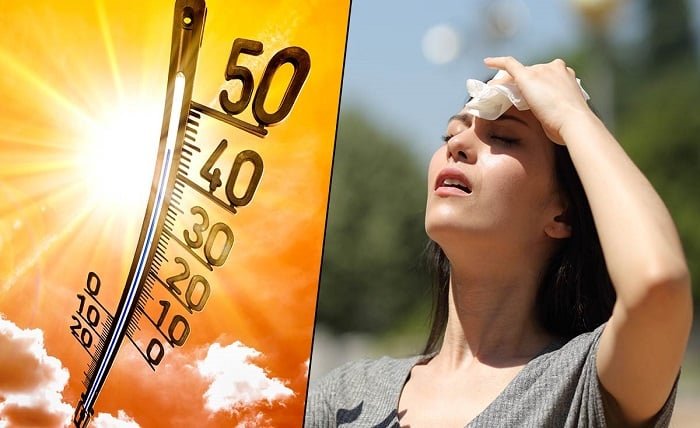Braving the Heat Understanding Emergency Preparedness for Heat Waves

With temperatures rising globally, heat waves have become an increasingly pressing concern for facility managers, residents, and homeowners alike. Not only can these extreme weather events strain local resources, but they also pose serious health risks. This blog post will unravel effective strategies for emergency preparedness during heat waves, ensuring safety and peace of mind for all.
The Growing Threat of Heat Waves
Heat waves are more than just uncomfortable weather patterns—they’re a public health threat. Recent studies show a marked increase in their frequency and severity. Understanding the magnitude of this threat is crucial for effective preparation. Facility managers need to anticipate potential impacts on infrastructure, while residents must be mindful of their personal well-being.
Preparation starts with awareness. Knowing when a heat wave is forecasted allows for timely action. Facility managers should monitor updates from meteorological services and communicate effectively with their teams. Meanwhile, residents and homeowners can stay informed via mobile alerts to ensure they have ample time to prepare.
Understanding Heat Wave Risks
Heat waves can lead to dehydration, heat exhaustion, and even heat stroke. Vulnerable populations, such as the elderly and those with pre-existing health conditions, are at higher risk. Facility managers should identify these groups within their care and devise strategies to provide them with extra support.
Local infrastructure can also suffer. Power grids are often strained, leading to blackouts. Facility managers must plan for such contingencies, ensuring backup generators are in place and operational. Homeowners can protect themselves by having a stockpile of essentials and an alternative power source if possible.
Creating a Heat Wave Response Plan
Every facility and household should have a robust heat wave response plan. For facility managers, this means coordinating with local authorities and healthcare providers to establish emergency protocols. Homeowners and residents should ensure they have an evacuation plan if temperatures become unbearable.
Communication is key. Facility managers should establish clear lines of communication with their tenants and staff. This could include posting informational flyers, hosting briefings, or sending regular updates via email or text. Residents should stay connected with community groups for support and advice.
Optimizing Indoor Environments
During a heat wave, maintaining a cool indoor environment is crucial. Facility managers must ensure air conditioning units are serviced regularly to prevent breakdowns. Residents should check their home cooling systems as well. For those in Ogden, seeking professional ac repair in Ogden can preemptively address any issues.
Simple measures like closing blinds and using fans can also help maintain a comfortable temperature. Encouraging the use of energy-efficient appliances can reduce the strain on power systems. Residents are advised to use appliances during cooler times of the day to conserve energy.
Hydration and Nutrition Tips
Staying hydrated is vital during a heat wave. Facility managers should provide ample water stations in common areas. Homeowners can prepare by stocking up on bottled water and encouraging family members to drink regularly, even if they don’t feel thirsty.
Nutrition also plays a role in combating heat. Consuming light, hydrating foods such as fruits and salads can help maintain energy levels. Facility cafeterias should adjust menus accordingly, promoting options that nourish without adding to internal heat.
Community Engagement and Support
Building a resilient community is essential. Facility managers can collaborate with local organizations to host educational workshops about heat wave preparedness. These sessions empower residents with knowledge and resources, fostering a sense of community.
Neighbors can support each other during heat waves by checking in and sharing resources. Setting up community groups via social media or messaging apps creates a network of support. This not only helps distribute necessary supplies but also strengthens communal bonds.
Recognizing and Responding to Heat-Related Illnesses
Awareness of heat-related illnesses is crucial. Facility managers should train staff to recognize signs of heat exhaustion and heat stroke, ensuring prompt medical attention when needed. Residents should familiarize themselves with symptoms like dizziness, nausea, and excessive sweating.
Quick action can save lives. Establishing emergency contacts with local healthcare providers ensures swift response times. Residents are encouraged to keep first aid kits stocked and accessible, ready to treat minor ailments immediately.
The Role of Local Authorities
Facility managers and residents should engage with local authorities to understand their role during heat waves. Governments often have contingency plans and resources to help communities cope. Staying informed about available services can enhance preparedness efforts.
Collaboration with authorities can also expedite recovery efforts post-heat wave. Facility managers should document any damage or incidents for official reporting. Residents may also be eligible for assistance programs, so keeping abreast of announcements is beneficial.
Long-Term Strategies for Heat Resilience
Building long-term resilience involves investing in sustainable practices. Facility managers can explore energy-efficient buildings and cooling systems. Homeowners might consider installing solar panels or green roofing solutions to reduce reliance on grid power.
Education is ongoing. Participating in workshops or courses on climate change and sustainability equips communities with knowledge to face future challenges. Sharing insights with neighbors further reinforces collective resilience.
Innovations in Heat Wave Preparedness
Technological advancements offer new tools for heat wave preparedness. Facility managers can leverage smart building technologies to monitor and manage energy consumption. Residents can use apps that track local weather patterns and provide personalized safety tips.
Innovation extends to community initiatives. Crowdsourced platforms enable resource-sharing, connecting those in need with others who have excess supplies. These digital solutions enhance traditional preparedness methods, offering greater flexibility and reach.
Reflecting on Lessons Learned
After a heat wave, it’s important to reflect on what worked well and what didn’t. Facility managers should review response plans, seeking feedback from staff and residents. This continuous improvement approach strengthens future preparedness efforts.
Residents can conduct their own reviews, considering personal experiences and community interactions. Sharing lessons learned fosters a culture of preparedness, motivating collective action and reinforcing communal bonds.
Building a Culture of Preparedness
In conclusion, emergency preparedness for heat waves is a shared responsibility. Facility managers, local residents, and homeowners all play vital roles in ensuring safety and resilience. By adopting proactive measures and fostering community engagement, we can mitigate the impact of heat waves and support one another through extreme weather events. Stay informed, stay connected, and stay prepared—together, we can weather any storm.
heat wave preparedness
energy-efficient appliances
recognizing heat-related illnesses





